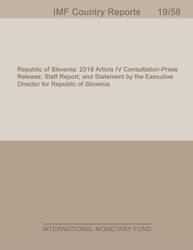
Republic of Latvia: Selected Issues
Republic of Latvia: Selected Issues
READ MORE...
Volume/Issue:
Volume 2025
Issue 273
Publication date: September 2025
ISBN: 9798229026260
$20.00
Add to Cart by clicking price of the language and format you'd like to purchase
Available Languages and Formats
| English |
Prices in red indicate formats that are not yet available but are forthcoming.
Topics covered in this book
This title contains information about the following subjects.
Click on a subject if you would like to see other titles with the same subjects.
Labor , Public Finance , Demography , labor productivity growth decomposition exercise , labor productivity distribution , TFP growth decomposition , EU electricity market , electricity price , entrant firm , Productivity , Electricity , Labor productivity , Pension spending , Pensions , Baltics , Europe , Western Europe
Also of interest
Summary
This Selected Issues paper highlights importance of ensuring adequate and affordable pensions in Latvia. Latvia has a three-pillar pension system which combines an earnings-related public scheme, based on notional accounts, with a funded mandatory pillar and a private voluntary contributions pillar. Despite the well-designed model, Latvia’s current pension system may be unable to provide some of its citizens with adequate retirement income and curb old-age poverty. Improving pension adequacy and meeting societal expectations require strengthening the second and third pension pillars and raising public spending on pensions in the future—which will add to medium- and long-term spending pressures. The government could improve pension adequacy and address future pressures on pension spending by raising revenue, reorienting and rationalizing spending, increasing the contribution rates and the returns to the mandatory defined contribution pension pillar, and strengthening incentives for higher voluntary savings for retirement. A comprehensive approach should also be adopted to help cushion the effects of population aging and improve pension adequacy, including by pursuing active labor market policies to increase labor force participation, incentivizing pensioners to work, and linking the retirement ages to future life expectancy gains.



